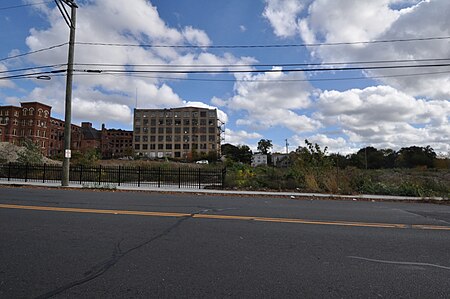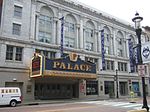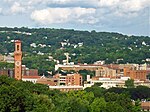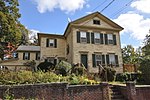Matthews and Willard Factory
Buildings and structures completed in 1874Buildings and structures demolished in 2012Demolished buildings and structures in ConnecticutIndustrial buildings and structures on the National Register of Historic Places in ConnecticutNational Register of Historic Places in New Haven County, Connecticut ... and 1 more
Waterbury, Connecticut

The Matthews and Willard Factory was a historic industrial site at Cherry Avenue and North Elm Street in Waterbury, Connecticut. Founded in 1874, Matthews and Willard contributed to the expansion of Waterbury's brass processing industry. The plant remained little altered from its last period of expansion c. 1900, and was a good example of period industrial architecture. It was listed on the National Register of Historic Places in 1988, and was demolished in 2012. As of 2018, the site stands vacant.
Excerpt from the Wikipedia article Matthews and Willard Factory (License: CC BY-SA 3.0, Authors, Images).Matthews and Willard Factory
North Elm Street, Waterbury
Geographical coordinates (GPS) Address Nearby Places Show on map
Geographical coordinates (GPS)
| Latitude | Longitude |
|---|---|
| N 41.556666666667 ° | E -73.036111111111 ° |
Address
North Elm Street 100
06702 Waterbury
United States
Open on Google Maps








